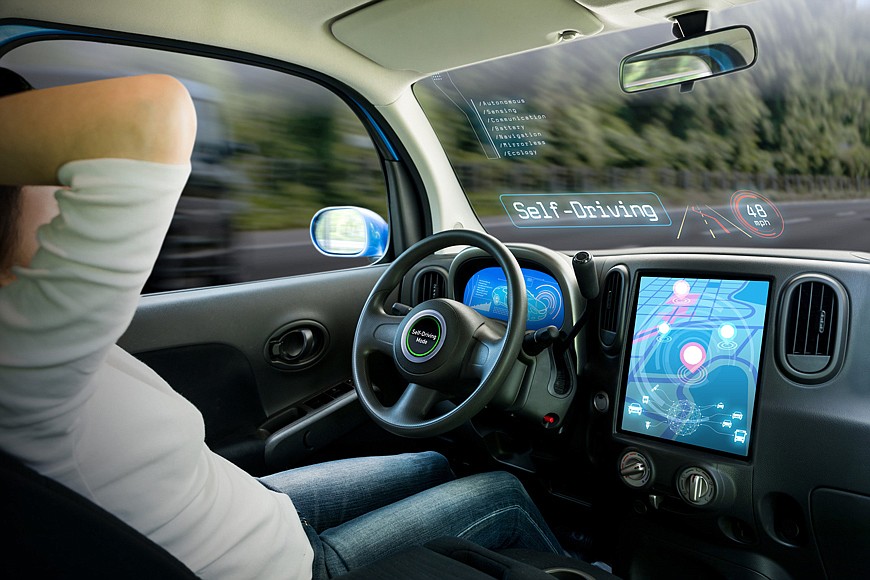- January 14, 2025
-
-
Loading

Loading

At the beginning of May you could have seen an amazing sight up in Tampa: A driverless car carrying passengers for demonstration rides on the closed express lanes of the Selmon Expressway.
It was part of an event put on by the Tampa Hillsborough Expressway Authority working with a number of leading industry companies and SAE International, the professional association of engineers who work in the aerospace, automotive and commercial-vehicle industries.
It highlights how welcoming Florida has been to testing driverless cars, and in particular how Tampa has staked out a leadership role in testing connected and driverless cars.
The host of the event, Republican state Sen. Jeff Brandes of Pinellas County, has become a national expert on driverless cars. He recognized the momentous event, stating “I am incredibly grateful that SAE International is bringing this self-driving ‘hands off’ demo to Tampa Bay. Our residents will be able to experience the future of transportation and provide feedback that will be invaluable to industry leaders and policymakers as we chart a course toward the shared, electric and autonomous future.”
Of course, some people are worried about a future with driverless cars in it. When a driverless car in Tempe, Ariz., struck and killed a pedestrian earlier this year, some asked, “How, exactly, do we feel about unleashing this tech on public streets, inflicting it on people without their consent or even knowledge?” And some have called for more regulation of driverless car testing.
But there is nothing about the testing of driverless cars thus far that indicates they present more of a threat than human drivers and deserve special regulatory attention. Most of all, slowing down driverless car development could slow down one of the most promising ways to reduce crashes and save lives.
It would be an epic tragedy for us to accept tens of thousands of deaths caused by human drivers every year and reject driverless cars if they can’t promise zero deaths. Pedestrian deaths from cars are overwhelmingly problems of driver inattention, careless pedestrian behaviors and urban designs that provoke those failings. At the same time, accident rates among elderly drivers are rising faster than the growth in their population, a problem hard to address without a change in technology like driverless cars. They provide an opportunity to address those problems in ways we simply have not been able to do with current technology.
Think about this: Right now in America there are 36.5 million people who developmentally or physically are unable to drive; 45 million too poor to own a car; 55 million who are approaching the age when they can no longer drive; 7.3 million blind people; and more than 70 million kids who cannot yet drive. Some of those categories overlap, but they still indicate a huge number of people in the nation who cannot fully enjoy the mobility an auto provides. Transit tries to fill some of that gap, but can only do so much.
Driverless cars will open up so much more of the world to all of those people. How much more will they be able to do? How many more places would they be able to live and work? The changes to their lives, the economy, and changes to how urban areas function is staggering to think about.
In Sarasota, our aging population would not have to limit their mobility to what they can reach via transit or occasional taxi. Even with more vehicles on the road, eventually driverless cars will reduce congestion — even during season! — because they use the road space more efficiently and smoothly, and so many more cars can flow down the same street when robots are driving them rather than humans with much longer reaction times.
And you can’t be a Sarasotan if you are not thinking about ROUNDABOUTS! Driverless cars laugh at roundabouts and will navigate them with ease. I can hear the “I told you so’s” from roundabout advocates already.
Also consider parking. A University of Toronto study calculated that a well-designed driverless car parking lot could hold up to 87% more cars than current lots. And that assumes most people owning and parking their driverless cars, rather than using them as shared rides like Uber or Lyft. There is the solution to our parking problems at St. Armands Circle, downtown, Siesta Beach, etc.
So let’s stop worrying and learn to love driverless cars. Once they get the bugs worked out, in not so many years, they will be a boon to our lives in so many ways.
Adrian Moore is vice president of Reason Foundation and lives in Sarasota.